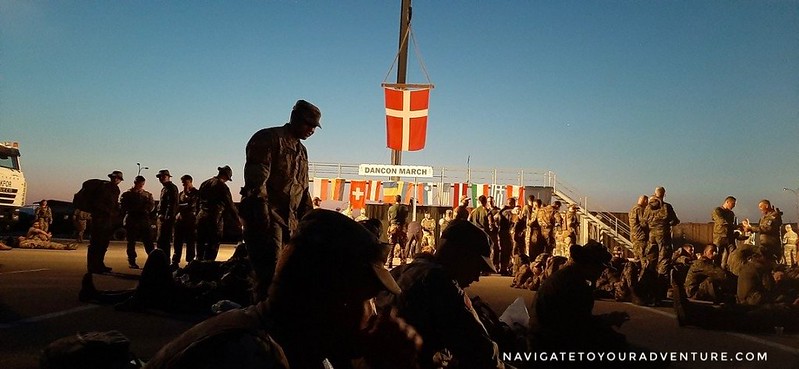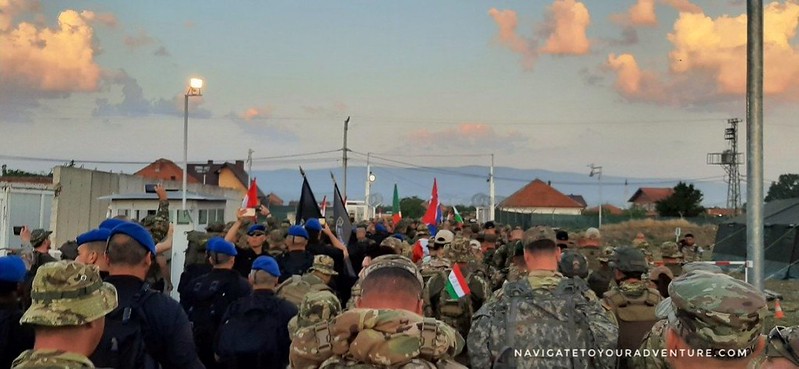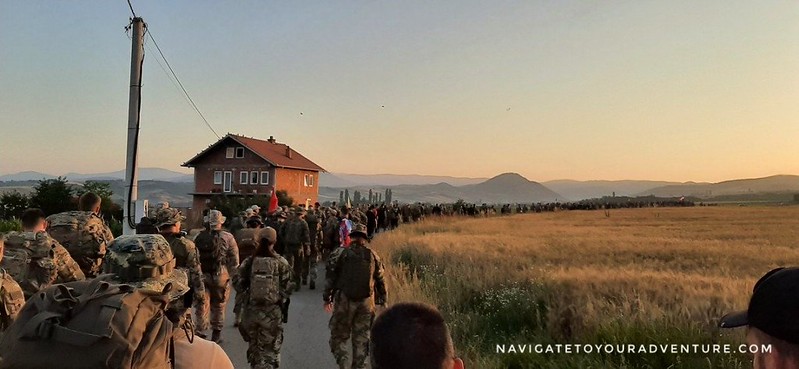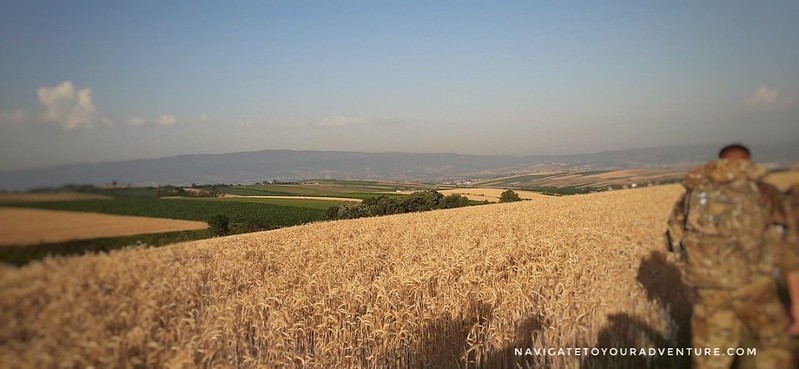DANCON MARCH || Camp Novo Selo, Kosovo
DANCON stands for Danish Contingent. The DANCON March is a long-standing tradition that dates back to 1972 when the Royal Danish Army was deployed to Cyprus. Since then, the event has been held wherever the Danish Contingent is stationed, including locations such as Afghanistan, Bosnia, Croatia, Kosovo, and Iraq, among others.
The march serves two key purposes: to assess the Army's physical readiness and to provide a social event for participants. The route typically winds through the countryside near the Danish camp, fostering a sense of connection and trust between the Danish military and the local residents. Additionally, proceeds from each march are donated to support wounded Danish soldiers and veteran programs.
- A 25km route on foot, crossing varying terrain.
- A 10kg dry-weighted pack, in addition to food, water, socks, and other essentials.
- Weapons may be included as part of the load.
- The march must be completed in full military uniform and boots.
- The march has an 8-hour time limit.
Can I wear the medal on my uniform?
The short answer for U.S. military personnel is no. The DANCON medal is considered "honorary" and can only be accepted and retained, not worn on the uniform. I cannot speak for other armies' policies on wearing the medal. However, the medal is more of a reminder of the "Type II fun" you had and a badge of accomplishment for bragging rights. Don't let the inability to wear the medal discourage you from participating—it’s about more than just the award. The event is a social gathering with multinational troops and, importantly, serves as a fundraiser for Danish veteran programs.
Yes, each Danish Contingent designs its own medal based on regimental traditions, so the medal may vary from one march to the next.
Approximately 900 participants took part in the march, hosted by the Danish Contingent. Soldiers from the following partner nations were represented: Austria, Bulgaria, Croatia, Denmark, Germany, Hungary, Italy, Latvia, Poland, Slovenia, Switzerland, Turkey, and the United States. I’m sure I’ve missed a few others.
The last time I participated in the DANCON March, I loaded my pockets with candy to hand out to the children in the villages we passed. However, since we started our march before the sun had risen and finished before the villagers started their day, I didn’t bring any candy this time. If your event takes place during daylight hours, I highly recommend bringing candy to give to the local children.
Pro-tip: Save some candy for your return to Camp Novo Selo. While you’ll miss the children at the start of the march, there will be kids in the village just outside the camp on your way back. If you don’t have candy, they’ll likely ask for uniform patches, which can be a bit persistent.
Navigating the route proved challenging, as passing other participants was difficult due to the sheer number of people, the crops, and the uneven terrain. Once we finally reached the asphalt, it was time to make a move and push forward.
However, the Royal Danish Army had a little trick up its sleeve! As we neared the camp, we thought we were almost done—just a few hundred steps away from where we started hours earlier. But then, one of the Danish soldiers cheered us on and told us we had to take a lap around the running track at the camp. In an instant, I went from thinking I was finished to realizing I had more to go. It felt like a bit of a mind game—definitely a disheartening moment!
A few things to keep in mind if you're considering doing a DANCON March: Each Danish contingent designs its own ribbon, reflecting its regimental traditions. The routes can vary, and sometimes the distance may be shorter depending on factors like heat and manpower. The start time could be a mass start or staggered, so be prepared for either. Tickets for the event sell out quickly, so don't hesitate to secure yours once they become available.










Comments